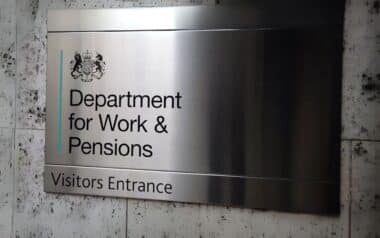From 1 April 2025, workers across the UK will benefit from significant increases to the minimum wage, with the National Living Wage (NLW) for those aged 21 and over rising to £12.21 per hour. The Government’s annual review, led by the Low Pay Commission, has introduced these changes to provide workers with much-needed financial relief in response to rising living costs.
The updated rates include notable boosts for younger workers and apprentices, alongside an increased accommodation offset for employers providing housing. While these changes promise to enhance earnings for employees, they also present challenges for businesses that rely heavily on minimum-wage workers.
New Minimum Wage Rates for 2025
The updated minimum wage rates for 2025 reflect the Government’s commitment to improving earnings for workers across all age groups and roles. These increases not only provide a financial boost but also aim to reduce inequalities between younger and older employees. Below is a breakdown of the new rates and how they compare to the current ones:
| Category | 2024 Rate (£) | 2025 Rate (£) | Increase (£) | Increase (%) |
|---|---|---|---|---|
| National Living Wage (21+) | £11.44 | £12.21 | £0.77 | 6.7% |
| 18–20 Year Old Rate | £8.60 | £10.00 | £1.40 | 16.3% |
| 16–17 Year Old Rate | £6.40 | £7.55 | £1.15 | 18.0% |
| Apprentice Rate | £6.40 | £7.55 | £1.15 | 18.0% |
| Accommodation Offset (Daily) | £10.66 | £11.33 | £0.67 | 6.3% |
These increases ensure fairer compensation for workers while reducing wage gaps across different age groups.
Impact on Workers
The new minimum wage rates will bring substantial financial benefits, particularly for those in the lowest income brackets:
Higher Earnings for Full-Time Workers
For workers aged 21 and over, the increase to £12.21 per hour means a full-time employee working 37.5 hours weekly will see annual earnings rise from £22,918 to £24,441, an increase of £1,523. Younger workers, such as those aged 18–20, will also experience significant pay boosts, with hourly rates increasing by 16.3% to £10.00.
Greater Financial Security
The wage hikes offer workers more resources to manage everyday expenses, save for future goals, or reduce debt. Younger employees, in particular, stand to gain significantly from the increased rates, which aim to encourage greater workforce participation.
Challenges for Employers
While the updated rates benefit workers, they present notable challenges for businesses, especially in sectors like retail, hospitality, and care that depend heavily on minimum-wage labour.
Rising Wage Bills
Employers will face higher operational costs, necessitating careful adjustments to budgets and potentially increased pricing strategies to offset the impact. Businesses with narrow profit margins may need to explore cost-saving measures or improve efficiency to remain competitive.
Compliance Obligations
Failure to implement the new rates by 1 April 2025 could result in significant penalties, including fines of up to £20,000 per underpaid worker. Employers must ensure payroll systems are updated promptly and that HR teams are prepared to manage the transition.
Preparing for the Wage Changes
Both workers and employers can take steps to prepare for the upcoming changes:
For Workers:
- Verify Your Pay: Ensure your employer is implementing the correct rates by the April 2025 deadline.
- Maximise Earnings: Use the additional income to address financial goals, such as paying off debt or building savings.
- Seek Advice If Needed: Contact organisations like Acas if you suspect underpayment.
For Employers:
- Update Payroll Systems: Ensure your payroll software reflects the updated rates to avoid compliance issues.
- Budget Adjustments: Review operational budgets to accommodate higher wages.
- Employee Communication: Inform staff about the changes and how they affect their pay.
Adapting to the 2025 Minimum Wage Increases
The 2025 minimum wage increases represent a crucial step toward improving financial stability for workers across the UK. For employees, particularly younger workers and apprentices, these pay rises mean greater opportunities to address everyday expenses, build savings, or plan for the future. The changes aim to create a fairer labour market by reducing income disparities and offering meaningful support amidst rising living costs.
For employers, the increases bring challenges, particularly in industries like retail, hospitality, and care that rely heavily on minimum-wage workers. Higher payroll costs will require careful budgeting and planning to ensure the changes are implemented smoothly. Businesses may also need to explore strategies to maintain profitability without impacting employee morale or customer satisfaction.
With proper preparation, both workers and businesses can adapt to these changes, ensuring the benefits of wage growth are maximised while challenges are effectively managed. The 2025 increases signal a pivotal moment, offering the potential for a more equitable and financially secure workforce.









